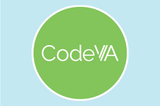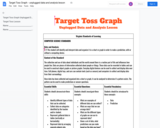
This poster is a resource to remind students to keep personal information secret while online.
- Subject:
- Impacts of Computing
- Material Type:
- Visual Media
- Author:
- Jude Raffeinner
- Date Added:
- 01/16/2022


This poster is a resource to remind students to keep personal information secret while online.

Students will code the Sphero Indi robots to build words that match a picture based on a phonics skill. Students will need to use the color codes to figure out what each code means to drive the car over the correct letters needed to spell the words.

Students will identify the characters, setting, and sequential events of a story and draw a picture summary including the main points and eliminating extra details. Abstraction is the act of eliminating extra information, so students will try to include only the bare essentials to tell the story elements. The teacher will assist them in finding elements that are important to include and students will work in groups of 3 to tell the beginning, middle, and end in a pictorial representation.These materials were created by CodeVA in partnership with George Mason University and were funded by the National Science Foundation under Grant Award #1837380

Students will use decomposition strategies to predict what will happen in a story based on the pictures through the use of the 5W and 1H question words. Students will identify the characters and setting of the story and make a prediction based on the information they gained from the images.These materials were created by CodeVA in partnership with George Mason University and were funded by the National Science Foundation under Grant Award #1837380

This resource is a 7-slide presentation detailing 5 goals students should have in mind when creating an algorithm. This guide targets younger learners in primary grades. It is available as a PowerPoint and a PDF.5 goals when trying to write an algorithm.● Defining the problem clearly● Breaking the problem down into small, simple parts● Define the solution for each part of the problem● Implementing the solution● Making it efficient (eventually)

In this lesson students will relate the concept of algorithms back to everyday real-life activities by planting a seed.

Students will build a program to retell a story. Students will include sequencing and debugging, abstraction, patterns, loops, and decomposition skills to effectively tell the story events and include essential story elements.These materials were created by CodeVA in partnership with George Mason University and were funded by the National Science Foundation under Grant Award #1837380

This is a basic review activity using the website blooket. The questions may be read by the teacher and the students may enter their answers indiviudally or as a group. The vocabulary that is used in this review is from the Virginia Standards of Learning for Computer Science for Grade 1. The teacher must create a free account with blooket in order to use this resource.

During this activity, students will read s blend words, document the different blends they encounter, and graph the results.This is a practice in reading consonant blends, using tally marks for counting/documenting data, and graphing to represent that data.

Students will be introduced to computer science words in conjunction with similar standards already taught in English SOLs. They will see how actions in a plot are similar to events in a code and how cause and effect is similar to events that trigger actions. Prewriting will take place as they create a plan and codes for an Ozobot maze.

The lesson is designed to build a classroom transformation theme while integrating computer science SOLs into the core curriculum. These lessons introduce students to basic algorithms and programming vocabulary they would use every day. The lessons show how easy it is to integrate computer science with a multidisciplinary approach. The engaging theme of a snow day allows the students to use real-world situations to learn the necessary standards. “Snow Day!” is a one-day classroom transformation that integrates all of the content areas with computer science. Students learn new vocabulary from interaction with prior experiences. By the middle of first grade, they already know how to retell a story in the correct sequence, plan and write sentences, add and subtract, and cut shapes. They also already know that snow melts. They will learn simple computer science vocabulary such as algorithm, loop, and debug.

After reviewing tips for following instructions, students will use plane figures to create a mystery image using their teacher's algorithm. Unfortunately, the teacher's directions are not very precise. Students will lend a hand by giving detailed feedback to debug and clarify the set of ordered instructions to successfully build a snowman.

After teaching about sorting objects, students will need some independent practice. In the classroom, students are often able to sort objects physically, but when they are learning online, they may need to do it by a computer program for the sake of teacher assessment. This Google slide deck has three attributes (shape, color, and size) for students to sort the pictures. It also contains some questions about sorting for discussion, whether students are in class or at home.

Students will sequence a story by connecting images from the beginning, middle, and end of the story on a grid board and write the algorithm to connect them in order. The arrows used to connect the beginning, middle, and end will construct an algorithm. Students will test their algorithm and debug if there are errors.These materials were created by CodeVA in partnership with George Mason University and were funded by the National Science Foundation under Grant Award #1837380

This poster reminds students about the elements of strong passwords.

One 45 minute lesson plan integrating computer science, english language arts, and history/social studies. As students listen to stories, they realize that these stories have a beginning, middle, and an end. Planning a story is like writing an algorithm or program in that there are steps that are followed as the author determines the beginning, middle, and end of the story. Authors use multiple ways of planning and telling a story; stories can be told using story maps, storyboards, or other sequential graphic organizers.

One 45 minute lesson plan integrating computer science, english language arts, and history/social studies. As students listen to stories, they build reading comprehension and historical skills by realizing that stories have a beginning, middle, and end. Authors use multiple ways of creating a story; stories can be told using story maps, storyboards, or graphic organizers. Just as authors sequence events in a story, people may use computers as they work together to plan, create, and test programs. Programming is used as a tool to create products that reflect a wide range of interests, such as video games, interactive art projects, and digital stories

Target Toss Graphing is a fun way for students to begin graphing and data analysis. In this lesson, students will work in either a small group, math rotation station, partners, or individually to collect, graph, and analyze data. The students will toss a pom pom towards a printed target board, document their results, and create a bar graph based on their data. Once they complete the graph, they can answer the provided questions to test their understanding.
Have fun collecting and graphing your data!

Lesson to support the Computer Science Standards of Learning.

Through the use of a choose-your-own-adventure style read aloud, the teacher will guide students to create an algorithm for the story they are creating within the book. This lesson also serves as a basic introduction into the process behind computer programs, including games, when the user makes a decision.